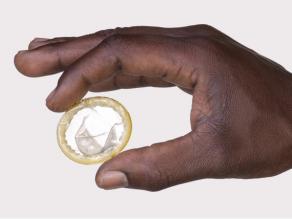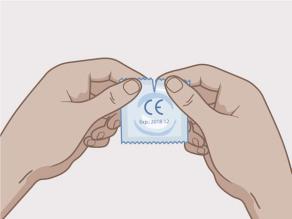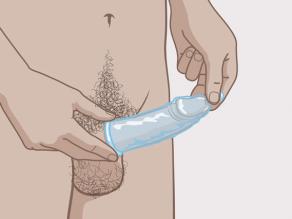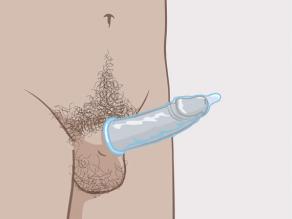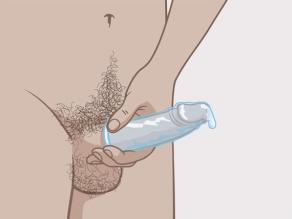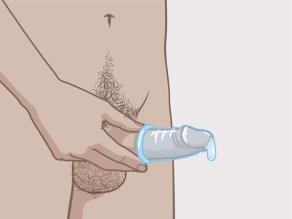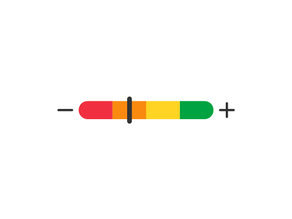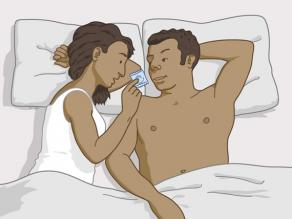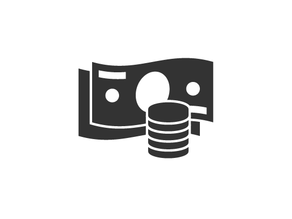Condom
The condom is a method of contraception. The condom is a thin rubber sleeve for the penis. It catches the semen when a man ejaculates.
Condoms are available in different sizes, depending on the thickness of the penis. The condom should not be too tight or too loose.
How to put on a condom
Put on a condom before penetration. Do it in the following way:
- Check that the expiry date has not yet passed. Only use condoms with the CE quality label on the wrapping.
- Tear the pouch open at the incision. Do not open it with scissors, a knife or your teeth and be careful with long fingernails. The condom may tear.
- Pull pack the foreskin if the penis is not circumcised. Squeeze the tip of the condom to leave room for the semen and put the condom on top of the penis. The penis should be hard (erection).
- Make sure the rolled-up rim of the condom is on the outside. Roll down the condom over the entire penis so it does not slip off during sex.
- After ejaculation, take the condom off the penis. Do this while the penis is still hard.
- Hold the condom by the rim and make sure no semen spills out.
- Tie the condom in a knot. This prevents semen from spilling out. Throw the used condom in a bin.
Only use the condom once.
Do not use 2 condoms at the same time. The condoms may tear.
Only use water-based lubricants on the condom.
Less reliable when used incorrectly
When a condom is used correctly, it is a very reliable method of contraception. However, the condom is often not used in the way explained above. In this case, the condom is less reliable. Around 18 in 100 women become pregnant when they use the condom for 1 year during sexual intercourse.
Protection against HIV and STIs
The condom also protects against HIV and reduces the risk of infection with an STI.
The condom and the female condom are the only methods of contraception that can protect you against these.
Responsible together
Both partners are responsible for using a condom. Talk with your partner about it.
Storing a condom
You should store a condom in a cool place.
Do not put a condom in your wallet. This can damage the condom. Put the condom in your handbag, for example, or in the pocket of your coat or shirt.
Buying condoms
You can buy condoms without a prescription at a pharmacy or supermarket. Sometimes you can also find them in other shops, bars and nightclubs or vending machines. You can also buy condoms on the internet.
A condom costs about 0.30 €. Special condoms, for example with a special flavour or ribs, can cost up to € 1 apiece.
Some health insurance funds repay part of the costs for contraception. Ask your health insurance fund about this.
Some organisations offer condoms for free. Ask one of the health professionals below.

